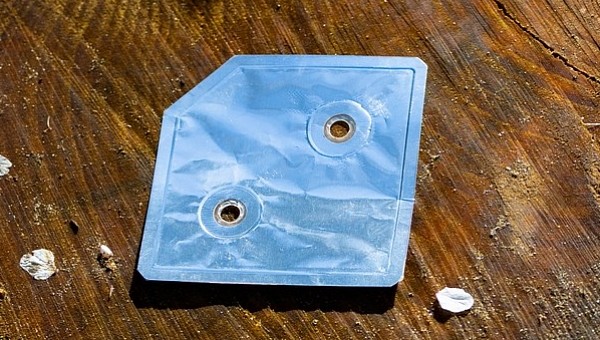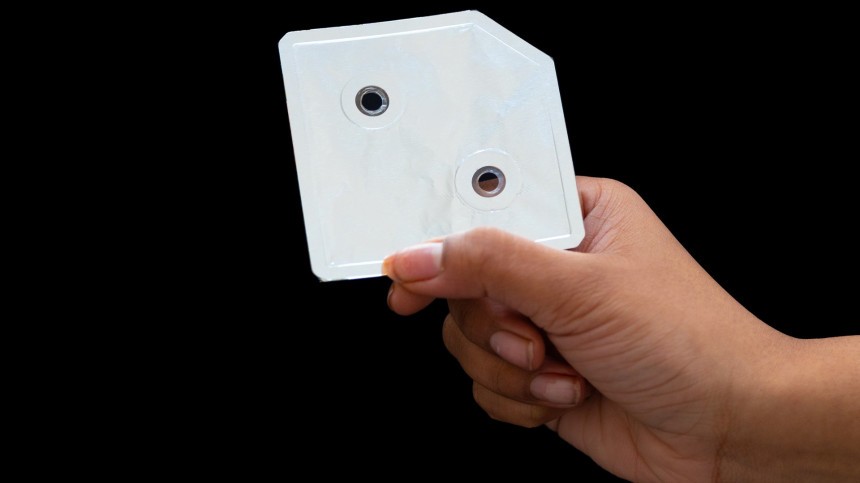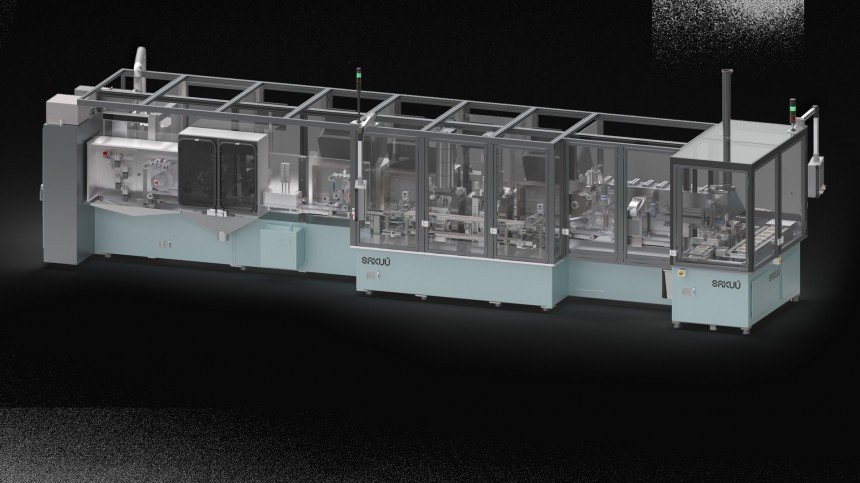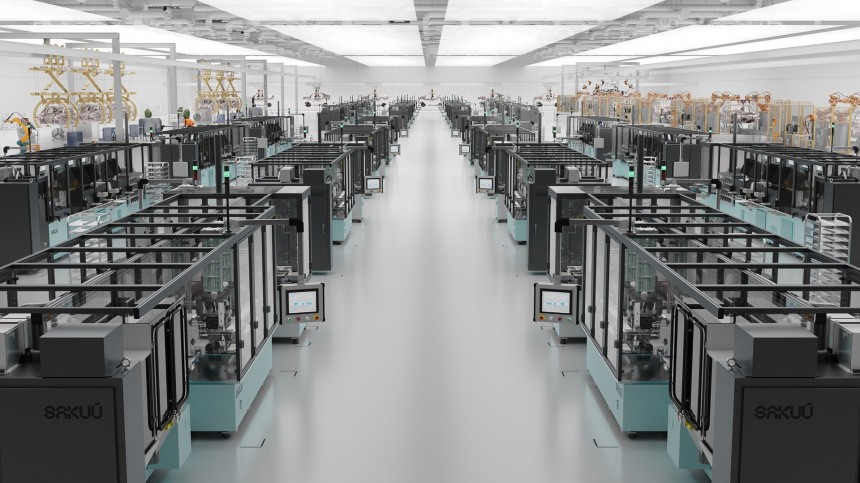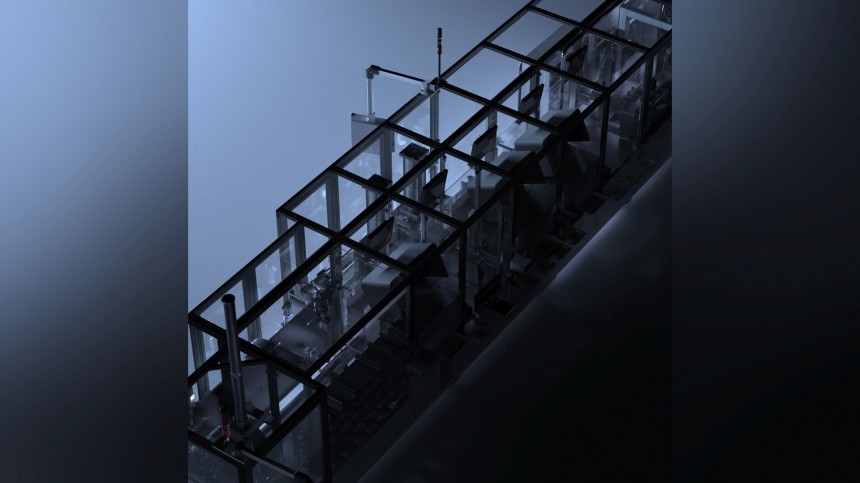One of the breakthroughs the Tesla 4680 cells were supposed to have was dry battery electrode (DBE) coating. This process would eliminate N-Methyl-2-pyrrolidone (NMP), a highly toxic organic substance that most batteries have to use as a solvent in their manufacturing process. The current 4680 cells still have NMP, but Sakuu got rid of it with 3D printing. And it has been doing so since December 2022.
The battery startup said it is producing patterned batteries at its Silicon Valley battery pilot line facility. The plant uses the Kavian additive manufacturing platform Sakuu, developed to make “lithium-ion, lithium-metal, and solid-state batteries.” By patterned cells, what the company means is that its batteries can have any shape. The example that the battery startup presented in the pictures has openings for thermal management. In other words, cooling and heating channels can pass through the cells instead of around them.
Sakuu told autoevolution that the solution allows “much better integration and packaging efficiency in its target product. Channels, holes, and non-regular 2D and 3D shapes will be possible because of this innovation.”
If you check the images with the cell Sakuu 3D-printed, it will look like the company made just one layer of a cell. The company corrected that impression by stating the printed battery is a single-layer cell, which allows “patterning and sealing active materials, adapting to the product’s 3D packaging space.”
According to Sakuu, “the 3D-printing process also enables the use of thinner layers than in conventional roll-to-roll. Integrated manufacturing processes can then stack the single-layer cells Kavian produces. So we will stack the cells after manufacturing to build the battery pack the customer wants, in series or in parallel. There is no number limit to stack depending on customer request.”
As impressive as the additive manufacturing method may sound, it is the dry cathode process that makes the Sakuu batteries more interesting. We asked the battery startup what advantages it may bring to its products, and this is what Sakuu had to say:
“Using the dry cathode process delivers on Sakuu’s sustainability goals of reducing material waste, toxic components, and increasing energy efficiency. Sakuu’s Kavian platform additive manufacturing (AM) technology has overcome the limited speed of conventional 3D printing using multiple processes simultaneously to enable commercial-scale printing of batteries, including lithium-ion, lithium-metal, and solid-state batteries. Moreover, we believe that Kavian printing is the only known and best manufacturing solution to produce solid-state batteries at commercial scale.”
In other words, Sakuu believes it can make its 3D-printed cells in a high volume, which is a crucial element for competitive prices. The company even calls its first product the SwiftPrint. At first, we thought it would be the name for Sakuu’s solid-state cells, but it may become the company’s first commercial product. Supposedly, it will be a lithium metal cell with high energy density. The startup used to refer to them as Sakuu-LM (Lithium Metal) and said it offered 800 Wh/l, which equates to about 300 Wh/kg. Now, the company talks about reaching up to 1,000 Wh/l.
Sakuu stated that its 3D-printing process starts with raw materials and ends with a “fully functional high-performance battery.” Unfortunately, the company did not disclose the production rate the Kavian platform allows it to achieve. It also did not inform how much its cells will cost to produce or who or how many partners have an eye on its technologies.
Most other battery startups have already announced delivering A samples for automakers to test. Sakuu went even further when it said its customers would receive its first samples in the fourth quarter of 2022 and that it was planning to sell lithium metal pouch cells by the end of 2022. The production start in December 2022 was for the A sample cells. Sakuu now states that it wants to reach commercial-scale production in 2023.
In fact, the company has an interesting strategy to reach the market. Robert Bagheri said it intends to achieve “an energy output goal of 200GWh by 2030 via a network of global partner gigafactories.” The Sakuu founder and CEO clarified that the Kavian AM platform would be sold to other battery manufacturers. In other words, Sakuu will not make money with production: royalties are the name of the game here.
Apart from the machines and methods to make Sakuu’s cells, the company will also license its chemistries, which can either be produced with “traditional roll-to-roll manufacturing or in gigafactories utilizing Kavian manufacturing.” Fair enough. We just have to find out who is willing to license Sakuu’s technologies and buy the 3D-printing platform it developed. If it proves to deliver the new cells EVs so desperately need, that should not be a problem for the cell startup.
We’ll keep an eye on how things evolve for Sakuu and which will be the first EV to use these 3D-printed batteries. Considering the development time of any vehicle, that should not happen before 2026.
Sakuu told autoevolution that the solution allows “much better integration and packaging efficiency in its target product. Channels, holes, and non-regular 2D and 3D shapes will be possible because of this innovation.”
According to Sakuu, “the 3D-printing process also enables the use of thinner layers than in conventional roll-to-roll. Integrated manufacturing processes can then stack the single-layer cells Kavian produces. So we will stack the cells after manufacturing to build the battery pack the customer wants, in series or in parallel. There is no number limit to stack depending on customer request.”
“Using the dry cathode process delivers on Sakuu’s sustainability goals of reducing material waste, toxic components, and increasing energy efficiency. Sakuu’s Kavian platform additive manufacturing (AM) technology has overcome the limited speed of conventional 3D printing using multiple processes simultaneously to enable commercial-scale printing of batteries, including lithium-ion, lithium-metal, and solid-state batteries. Moreover, we believe that Kavian printing is the only known and best manufacturing solution to produce solid-state batteries at commercial scale.”
Sakuu stated that its 3D-printing process starts with raw materials and ends with a “fully functional high-performance battery.” Unfortunately, the company did not disclose the production rate the Kavian platform allows it to achieve. It also did not inform how much its cells will cost to produce or who or how many partners have an eye on its technologies.
In fact, the company has an interesting strategy to reach the market. Robert Bagheri said it intends to achieve “an energy output goal of 200GWh by 2030 via a network of global partner gigafactories.” The Sakuu founder and CEO clarified that the Kavian AM platform would be sold to other battery manufacturers. In other words, Sakuu will not make money with production: royalties are the name of the game here.
We’ll keep an eye on how things evolve for Sakuu and which will be the first EV to use these 3D-printed batteries. Considering the development time of any vehicle, that should not happen before 2026.
